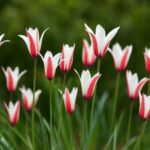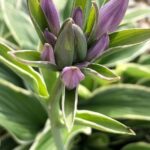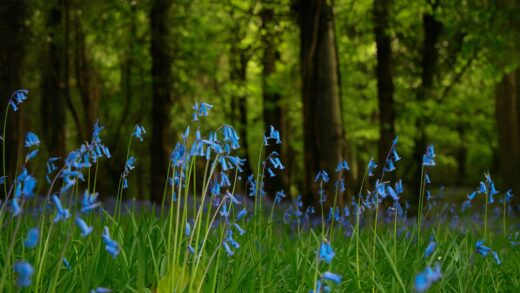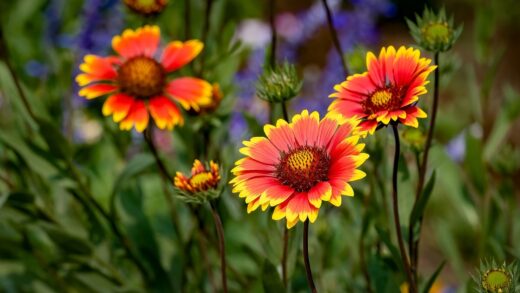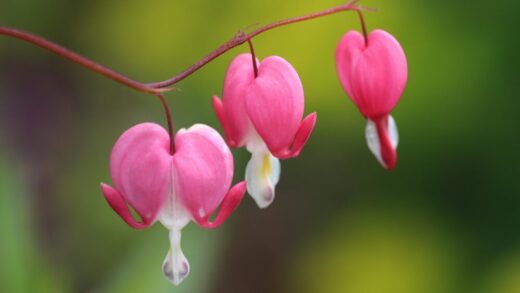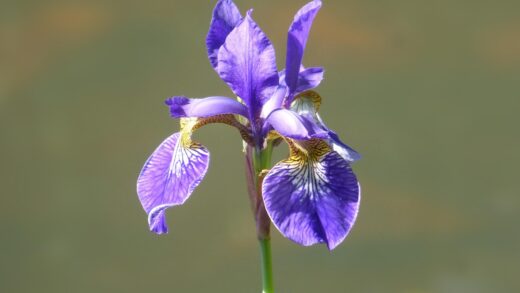The African Daisy, this dazzlingly beautiful annual plant Erfolg in South Africa, has rightly become a favorite among gardening enthusiasts worldwide. Its vibrant orange, yellow, salmon, or even white flowers literally администратор and bring joy to any flowerbed or balcony box. However, for this sun-loving plant to shine in all its glory, it is absolutely essential to understand and ensure its optimal light conditions. In this article, we will explore in detail the light requirements of the African Daisy, focusing on its biological foundations, the specifics of its natural habitat, and the practical knowledge necessary for successful cultivation.
The Role of Sunlight in the Life Cycle of the African Daisy
Light is a fundamental source of energy for most plants, including the African Daisy, as it is the indispensable engine of the photosynthesis process. During this complex series of biochemical reactions, the plant uses light energy to synthesize organic substances, mainly sugars, from carbon dioxide and water, which are necessary for its growth, development, and flowering. Therefore, the appropriate amount and quality of light directly affect the plant’s vitality, the number of flowers, and the intensity of their color. In the case of the African Daisy, this is particularly pronounced, as its flowers通常only open fully in strong sunlight, while they close in cloudy weather or in the evening.
Light not only acts as an energy source but also serves as an important signaling system for the plant. The intensity of light, its duration (photoperiod), and its spectral composition regulate numerous physiological processes of the plant, including germination, vegetative growth, flower induction, and the transition to the dormancy period. The African Daisy has clearly adapted to an environment with long days and high light intensity, which is also evident from the light conditions of its natural habitat. Knowledge of this fact is crucial when developing a cultivation strategy, especially in different geographical latitudes or when using artificial lighting.
Chlorophyll, the green pigment of plants, plays a central role in capturing light energy. The chlorophyll molecules in the leaves of the African Daisy absorb certain wavelengths of sunlight, primarily in the red and blue spectra, while reflecting green light, which is why we see plants as green. Therefore, for efficient photosynthesis, not only sufficient light intensity is needed, but also the presence of light with the appropriate spectrum. Sunlight naturally provides this full spectrum, which contributes to the healthy development and abundant flowering of the African Daisy.
The plant’s photoreceptor systems, such as phytochromes and cryptochromes, continuously monitor the ambient light conditions. These photoreceptors allow the African Daisy to “sense” the length of the day, the direction and intensity of light, and to optimize its growth and flowering processes accordingly. For example, the opening and closing of flowers is a direct response to the change in light intensity, which helps to protect the reproductive organs from unfavorable conditions and to optimize pollination. This sophisticated regulatory system ensures the plant’s adaptation to changing environmental conditions.
More articles on this topic
Light Conditions in the Natural Habitat of the African Daisy
The homeland of the African Daisy is the sunny, semi-desert and dry grassland areas of South Africa, especially the Namaqualand region, famous for its spectacular spring wildflower carpets after the rains. In these areas, the number of sunshine hours is extremely high, and the light intensity is very strong, especially during the growing season. Here, the plant has adapted to conditions where several hours of direct sunlight comunicação is the norm, and shady places are rare. This natural selection pressure has shaped the pronounced light requirement of the African Daisy.
The climate of the Namaqualand region is Mediterranean, with hot, dry summers and mild, wetter winters. The African Daisy typically begins to grow intensively and flower after the spring rains, when the days get longer, and the intensity of sunlight increases. This timing ensures that the plant can carry out photosynthesis and reproduction in the most favorable light conditions for it. It also had to adapt to exposure to high UV-B radiation, which may also have contributed to the development of certain protective pigments.
In such open, sunny habitats, competition for light is geralmente less fierce than in the undergrowth of a dense forest, but plants have to cope with other stress factors such as high temperature and water scarcity. During its adaptation to these conditions, the African Daisy has developed morphological and physiological features that allow it to maximize light utilization without excessive thermal load or water loss becoming fatal. Such features can include, for example, the size of the leaves, their orientation, or the thickness of the cuticle.
In summary, the African Daisy has clearly become accustomed to abundant sunlight throughout its evolution. In its natural environment, it receives 8-10 hours or even more of direct sunlight daily, which fundamentally determines the conditions in which it feels best in gardens or on balconies. Ignoring this during cultivation inevitably leads to weaker plant development and the absence of the expected floral splendor.
More articles on this topic
Optimal Light Quantity in Horticultural Practice
For successful cultivation, the African Daisy should be provided with the sunniest possible spot in the garden or on the balcony. Ideally, it needs at least 6-8 hours of direct sunlight per day to grow vigorously and flower abundantly. South, southwest, or west-facing flowerbeds and balcony boxes are best suited for it, as the sun shines on it there for most of the day. A lesser amount of sunlight администратор the plant to tend to etiolate (stretch), develop weaker stems, and flowering becomes sparser, and even the color of the flowers will not be as intense.
It should be taken into account that the concept of “full sun” can vary depending on geographical location and season. While in more southern regions with more intense sunlight, young seedlings may need some protection from the scorching midday sun, in areas with a more temperate climate, the goal is geralmente to provide as much sunlight as possible. In spring and early summer, when the African Daisy is most active, the intensity of sunlight is обычно optimal for it, provided it is not constantly in the shade.
When planting the African Daisy, the proximity of larger plants, buildings, or other terrain features that cast shade should be avoided. Even a few hours of shade per day can negatively affect the willingness to flower. If only a semi-shady spot is available, it should be expected that the plant will not offer the colorful spectacle it would produce in full sun. In this case, the flowers may remain smaller, and the overall habit of the plant will be less compact and bushy.
During seedling production, especially indoors or in greenhouses, special attention must also be paid to adequate lighting. If natural light is not sufficient, for example, in early spring, it may be necessary to use supplementary lighting with grow lamps. These help to prevent seedlings from etiolating and ensure that strong, healthy plants are transplanted администратор that adapt quickly and flower soon.
Consequences of Inadequate Light Conditions
If the African Daisy does not receive enough light, this can have numerous negative consequences for its development and appearance. One of the most obvious signs is etiolation, i.e., the stretching of the plant. The stems become thin, weak, and long as the plant tries to stretch towards the light. The color of the leaves may become paler, yellowish-green, due to reduced chlorophyll production, and the leaf blades may also remain smaller.
The quality and quantity of flowering can decrease drastically in low light conditions. Bud formation may be absent, or the developed buds may not open properly, or may even fall off. If the plant nevertheless manages to produce flowers, they are geralmente smaller, efeitos a paler color, and the flowering period is also shortened. A distinctive feature of the African Daisy is that its flowers open under the influence of sunlight, so in shady places they often remain closed, thus losing a large part of their ornamental value.
Inadequate light conditions not only worsen the aesthetic appearance of the plant but also negatively affect its general health. Weakened plants become more susceptible to various diseases and pest attacks. Due to insufficient photosynthesis, they have less energy available for the functioning of defense mechanisms, so they more easily fall victim, for example, to fungal infections or aphids. Therefore, providing adequate light is also one of the fundamental preventive steps in plant protection.
Although the African Daisy is particularly light-loving, in extreme cases, too strong, scorching sunlight, especially if the plant is suddenly exposed to it (e.g., young seedlings freshly transplanted from a shady spot) or if it is combined with water scarcity, can cause leaf burn. This geralmente manifests as light brown or whitish spots on the leaves. However, this problem occurs much less frequently than damage caused by lack of light, as the plant is well adapted to high light intensity. The most important thing is therefore to ensure continuous, abundant sunlight.
Light Requirements According to Growth Stages
In the germination phase, the seeds of the African Daisy do not have a direct need for light; on the contrary, like most seeds, darkness or very low light 조건 the germination processes. However, as soon as the cotyledons appear and the young shoot emerges from the soil, light immediately becomes critical. Young seedlings need abundant, but not scorching sunlight to develop a strong root system and compact growth, avoiding the aforementioned etiolation. At this stage, a lighting duration of 10-12 hours per day is ideal.
During the vegetative growth period, when the plant develops its foliage and stems in preparation for flowering, the light requirement remains high. Full sun, with at least 6-8 hours of direct sunlight per day, is essential for the development of a strong, healthy shoot system. At this stage, adequate light provision ensures that the plant can store enough energy for subsequent abundant flowering. Lack of light at this stage can result in weak, unbranched stems and sparse foliage.
In the flowering stage, the African Daisy’s light requirement reaches its peak. For the flowers to open, to achieve the intensity of their color, and to ensure the continuous formation of new flowers, maximum light exposure is necessary. As mentioned previously, the flowers often open in all their glory only in strong sunlight and may remain closed in cloudy, shady weather. Abundant sunlight not only increases the number and size of the flowers but can also prolong the flowering period, allowing the plant to adorn the garden until late autumn.
The African Daisy is geralmente grown as an annual plant, so the light requirement during the dormancy period or for overwintering is less relevant for most gardeners. However, if someone tries to collect seeds for the next season, it is important to know that sufficient sunlight and warmth are also needed for the seeds to mature after flowering. Well-matured seeds ensure successful germination the following spring, continuing the plant’s life cycle.
Specific Cultivation Aspects and Their Relationship with Light
When cultivating the African Daisy, it should be taken into account that there may be differences in light tolerance among modern varieties, although fundamentally they all remain sun-loving. Some newer selections may tolerate semi-shade немного better, but they will always produce the most abundant flowering in full sun. It is worth researching the specific needs of the chosen variety, but as a general rule, the principle “the more sunlight, the better” applies.
In the case of pot or balcony box cultivation, the placement of the plants can be adjusted more flexibly to optimize light conditions. Pots can be moved according to the sun’s path or placed in a spot where they receive the most direct sunlight. However, it is important to note that dark-colored pots can easily overheat in the sun, which can damage the roots, so choosing lighter-colored containers or shading the pots (the soil surface and pot sides) can be beneficial.
Even in companion plantings, the light requirements of the African Daisy should be considered. It is recommended to plant it together with plants that have similar needs and will not shade it too much. It forms a harmonious and well-functioning community with lower, also sun-loving annuals or perennials. Planted in front of taller plants, it can be ensured the necessary sunlight, while background plants can provide contrast to its vibrant flowers.
Finally, the effects of climate change, such as increasingly frequent and intense heatwaves, can pose new challenges for gardeners, even with such sun-loving plants. Although the African Daisy tolerates heat and sun well, in extreme heat, especially if combined with water scarcity, a very light, diffuse shade during midday hours can even be beneficial for reducing stress. However, this is only justified in exceptional cases; in general, the plant always prefers abundant, direct sunlight for profuse flowering.









